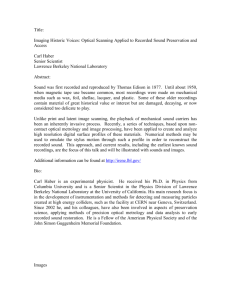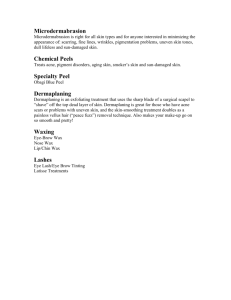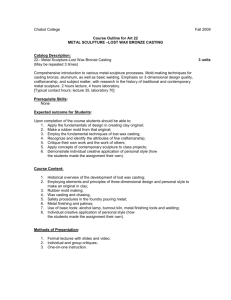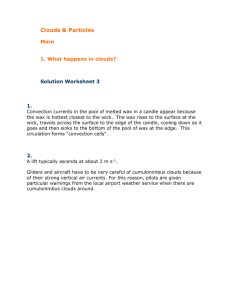Lost wax technique is very old and very simple
advertisement
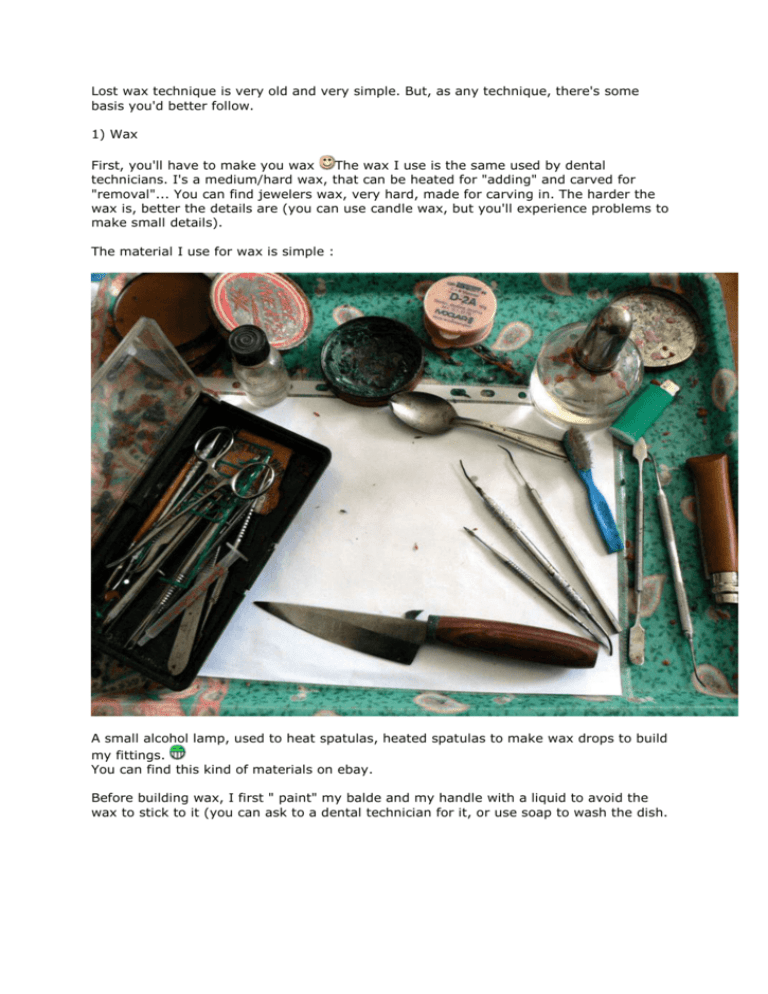
Lost wax technique is very old and very simple. But, as any technique, there's some basis you'd better follow. 1) Wax First, you'll have to make you wax The wax I use is the same used by dental technicians. I's a medium/hard wax, that can be heated for "adding" and carved for "removal"... You can find jewelers wax, very hard, made for carving in. The harder the wax is, better the details are (you can use candle wax, but you'll experience problems to make small details). The material I use for wax is simple : A small alcohol lamp, used to heat spatulas, heated spatulas to make wax drops to build my fittings. You can find this kind of materials on ebay. Before building wax, I first " paint" my balde and my handle with a liquid to avoid the wax to stick to it (you can ask to a dental technician for it, or use soap to wash the dish. When my wax is ready… To transform this wax into metal, we now need to pour a refractory material around, then heat it to remove wax before pouring metal in this mold. To pour the refractory, we use a rubber base with a cone in the middle, and a cylinder (inox) I remove carelully my wax , and mount it on a wax "tree", on top of the rubber cone : The main branch will bring metal to my fittings, the small branches, going from fittings to bottom are used to let hot air out of the mold, and to cool thick parts. Check position in the cylinder , then pour it You can use, as casting investment, dental investment, jewelry investment, refractory plaster, even refractory concrete used to build barbecues ! Of course, special investments are giving the best surface results. Before pouring you can "paint" the wax with investment using a soft brush, to help it going in precise parts. During the pouring process, hit the side of the cylinder to help bubbles coming out. Then, it goes in the furnace (electric furnace, home made) 2 hours at 250°C, to let wax out, then up to 750°C to let investment "expand", then beck to the required temp according to your metal (550° for bronze). The heating process depends on your investment material. When this heating process is dont you can pour your metal. To pour the metal , I use a spring machine I made : When the temp of the cylinder is correct (550° here), I heat my metal, when the metal is almost ready, I take my cylinder from the furnace (on the right) to put it in the spring machine, and when the metal is liquid, i release the spring, it centrifugates the metal in the cylinder. Cylinder cooling : When cold, I remove the investment and cut the parts from the tree : It's rough metal..I use a dremel to clean and adjust it : Then polish it : I can't help kidding: notice that the dragon wears a watch... So : 1 - Make Your Wax 2 - Make a "tree" 3 - Pour investment (shake the cylinder gently, hit it with a spatula) 4 - In furnace, let the wax out, then heat according to your investment and metal 5 - Pour your metal 6 - Approximative metal trajectory 7 - Let it cool (I generally drop my cylinder in water after 1 or two minits, it removes quite all investment) 8 - Then you have your tree with parts to cut ( for "soft" metals, you can cut it using cutting pliers) 9 - Clean, adjust and polish... Think of pouring metal as if you were pouring water : avoid places where bubbles can be kept (even if investment is a bit porous to gaz). Consider too that metal will retract a bit while cooling, so, if you have thick parts add small branches to help it cool before incoming metal. If incoming metal is cool before your thick parts, you can have a porous metal at the junction points. Also take care not to add too much boric acid while heating your metal, or you'll find it in your parts. --------------------------------------------------------------------------------------------------In Africa, it's done this way for traditionnal art (in French): http://www.la-borne.com/fifta/ I've explained the way I do, but there's a lot of others (you can't centrifugate a 3 meters high bronze horse !) specially for bronze and aluminium : http://www.backyardmetalcasting.com/


